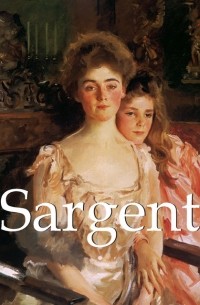
Автор
Donald Wigal — новинки
- 1 произведение
- 3 издания на 2 языках
-
30 Millennia of Painting Victoria Charles, Donald Wigal, Joseph Manca, Klaus Carl, Megan McShane
ISBN: 978-1-68325-359-4 Год издания: 2017 Издательство: Parkstone Press International Язык: Английский From the cave paintings of Lascaux, to the Madonnas of the Renaissance Italians, from the revolutionary Impressionists to the provocative canvases of the Pop Art movement—30 Millennia of Painting reunites the essential works of pictorial art, spanning the history of art from prehistory to the present. Featuring a thousand internationally recognizable paintings, these cultural treasures are presented in historical context, along with extended captions and biographies of one hundred of the most influential artists. An artistic, cultural, and educational resource, this book invites us to consider the interaction between history and art, and the influence artists through the ages have had on each other, as well as the future of the discipline. A veritable voyage through time and space, art and history, this guide offers a global vision of the evolution of painting. -
Sargent Donald Wigal
ISBN: 978-1-78160-866-1 Год издания: 2016 Издательство: Parkstone International Publishing Sargent was born in Florence, in 1856, the son of cultivated parents. When Sargent entered the school of Carolus-Duran he attained much more than the average pupils. His father was a retired Massachusetts gentleman, having practised medicine in Philadelphia. Sargent’s home life was penetrated with refinement, and outside it were the beautiful influences of Florence, combining the charms of sky and hills with the wonders of art in the galleries and the opportunities of an intellectual and artistic society. Accordingly, when Sargent arrived in Paris, he was not only a skilful draughtsman and painter as a result of his study of the Italian masters, but he also had a refined and cultivated taste, which perhaps had an even greater influence upon his career. Later in Spain, it was chiefly upon the lessons learned from Vel?zquez that he found his own brilliant method.
Sargent belongs to America, but is claimed by others as a citizen of the world, or a cosmopolitan. Sargent, with the exception of a few months at distant intervals, spent his life abroad. The artistic influences which affected him were those of Europe. Yet his Americanism may be detected in his extraordinary facility to absorb impressions, in the individuality he evolved, and in the subtlety and reserve of his methods – qualities that are characteristic of the best American art.
-
Opium. The Flowers of Evil Donald Wigal
ISBN: 978-1-78310-018-7 Год издания: 2014 Издательство: Parkstone Press Язык: Русский While the 20th century was one long war for control of the world's oil supplies, opium was a key strategic raw material during the four preceding centuries. Opium consumption dates back to Ancient Egypt. Initially a useful pharmaceutical product called laudanum; it quickly became popular in Britain. It then became the basis for trade with isolationist China as soon as the Opium Wars obtained trading rights for Western companies and the Chinese began smoking it in industrial quantities. This book offers a tastefully illustrated history of this toxic substance, its paraphernalia, and the era surrounding it.
-
Klee Donald Wigal
ISBN: 978-1-84484-857-7 Год издания: 2011 Издательство: Parkstone Press Язык: Русский Paul Klee is one of those artists you can hardly classify in one movement of art history. Close to Wassily Kandinsky and Franz Marc, he was an important member of Der Blaue Reiter, an expressionist group of painters. Later, went on to be involved in the Bauhaus and even gave painting lessons in Dessau’s school. According to him, art had nothing to do with production, but was all about making things clearly visible. In his paintings, Klee’s subtlety combined the tendencies of the beginning of the 20th century. To German Expressionism, he injected elements of Cubism and Orphism, sprinkling his works with a surrealistic and melancholic poetry. The author leads us through the marvels of Klee’s world where each brush stroke echoes the power of colors.



